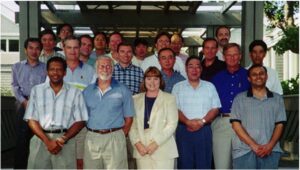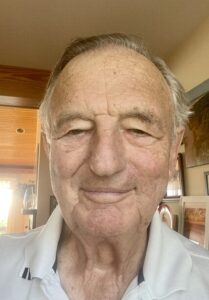How many people go through 80 years without getting some physical scars? I did, at least after I gained two (on my forehead and knee) in a pre-school playground at the age of four. I am reflecting on this because, in my 85th year, I have achieved no fewer than six more! All resulted from surgeries, not from any fun or playground activities. I hasten to reassure anyone who might reasonably be concerned about my health. None of the surgeries were for serious problems.
This experience has reminded me of the on-going quest to do surgical procedures without leaving scars. More than 40 years ago, I organized a conference at The Middlesex Hospital in London, called “Surgery without scars”. Those were the early days of the therapeutic endoscopy revolution. We were demonstrating and extolling the virtues of treating some digestive conditions (like bile duct stones and polyps) with an endoscope through the mouth, or anus, rather than having to plunge a scalpel through the abdominal wall and leave big scars.
What can be done endoscopically has expanded dramatically since that time, and I am amazed at what some of my ex-colleagues and successors are doing. I was taught to keep strictly within the lumen of the gut. Now some tunnel under the mucosa (into the “third” space) to work on underlying muscles, and some intentionally perforate through and burst into the abdominal cavity. These revolutionary and scary ideas were first proposed at a meeting that Rob Hawes and I hosted at Kiawah in 1998, with Tony Kalloo, Chris Gostout, Sydney Chung, Sergey Kantsevoy and Jay Pasricha. This meeting led to the formation of the Apollo group and eventually Apollo Endosurgery.

Nagi Reddy in India shows a video of removing the appendix through the mouth…honest. This was perhaps the apogee (whatever that is) of the brave efforts of some endoscopists to explore Natural Orifice Trans Endoscopic Surgery (NOTES). In USA this concept was explored by a group of surgeons and medical gastroenterologists cleverly calling themselves NOSCAR (Natural Orifice Surgery Consortium for Assessment and Research). They never found a “killer application”, but the efforts did spin off many useful gizmos and tools, such as the suturing device (invented by the Apollo group) that have empowered other endoscopic procedures.
At the same time, surgeons were greatly reducing the size of their scars by embracing the laparoscope, which allows abdominal surgery through 3-4 small holes. Starting with gall bladder removal in about 1990 there are now very few abdominal operations that some pioneer has not approached laparoscopically. And there is increasing use of robotic assistance (which did not help with my first hernia repair).
Scars are certainly good. We may not like them, but they result from an awesome healing process. Very little may be visible after only 3 weeks. We would be even uglier without them.

And scars are strong, as Fred was glad to trust when he became the tug of war rope at school. Although it looks as though the stitches are still in……

Thank you, scars.
